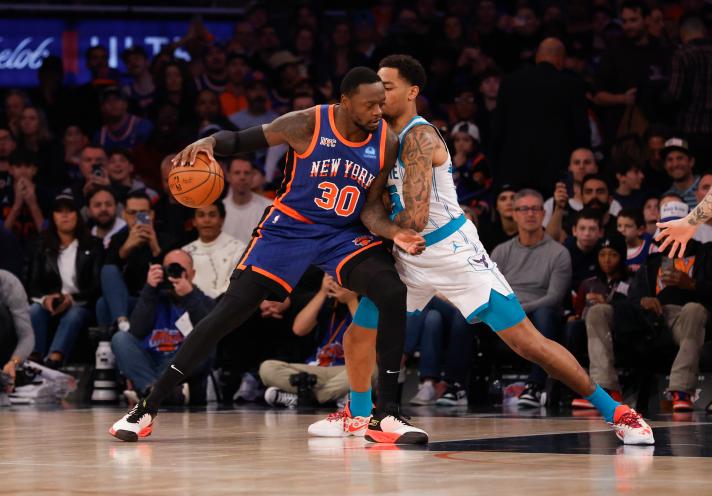Knicks has established himself as a cornerstone of the New York Knicks franchise, especially with his All-Star performances. However, many fans and analysts overlook a significant aspect of his versatility: his past as a small-ball center. This experience is critical in today’s NBA, where teams are often looking to maximize floor spacing, create mismatches, and exploit the growing trend of smaller, more agile lineups.
Randle, at 6’8” and around 250 pounds, has the physicality to hold his own in the paint but is also mobile enough to operate on the perimeter. During his time with the Los Angeles Lakers and the New Orleans Pelicans, Randle was often deployed as a small-ball center, a role that forced him to guard bigger players while also opening up offensive possibilities. The ability to stretch the floor while operating as a center allowed Randle to showcase his ball-handling, passing, and finishing skills in transition and the half-court.
What makes Randle so valuable in a small-ball center role is his ability to play as a facilitator and scorer. He is comfortable bringing the ball up the court, initiating offense, and even stepping beyond the three-point line to keep defenders honest. This versatility is important for the Knicks, who are often limited by their traditional centers who lack that offensive flexibility. In a small-ball lineup, Randle can operate as a mismatch problem for slower centers, forcing opposing teams to adapt to his style of play.
Defensively, Randle’s strength and toughness enable him to battle with bigger opponents in the paint, though he does give up some size. However, his lateral quickness makes him effective in switching onto guards and wings in pick-and-roll situations, a critical aspect of modern defensive schemes.
In recent seasons, coach Tom Thibodeau has shown some reluctance to go small, preferring a more traditional lineup with a true rim protector like Mitchell Robinson. However, deploying Randle as a small-ball center could be a strategic advantage, especially in situations where the Knicks need to push the pace or stretch the floor with more shooting. By playing Randle at the five, the Knicks can exploit mismatches on both ends of the floor, enhancing their versatility and giving them a different look when needed.
Randle’s past success as a small-ball center suggests that the Knicks could unlock another level of their offense by utilizing him in this role more frequently. His unique blend of size, skill, and versatility can create matchup nightmares for opponents, adding a dynamic dimension to the Knicks’ lineup. As the team looks to advance deeper into the playoffs, this flexibility might be the key to adapting to the constantly evolving modern NBA.
